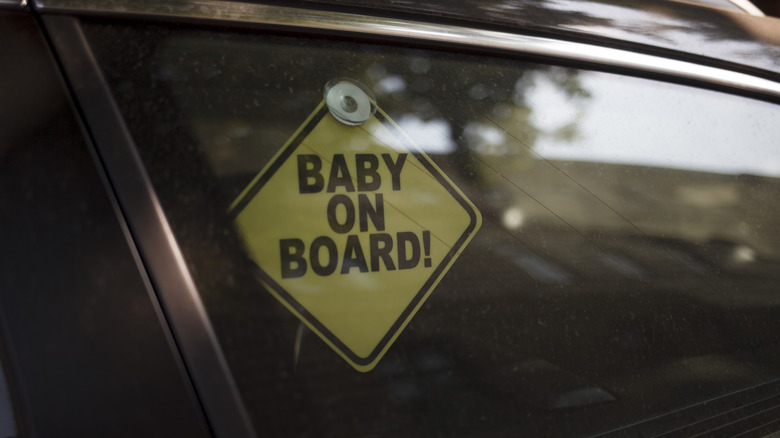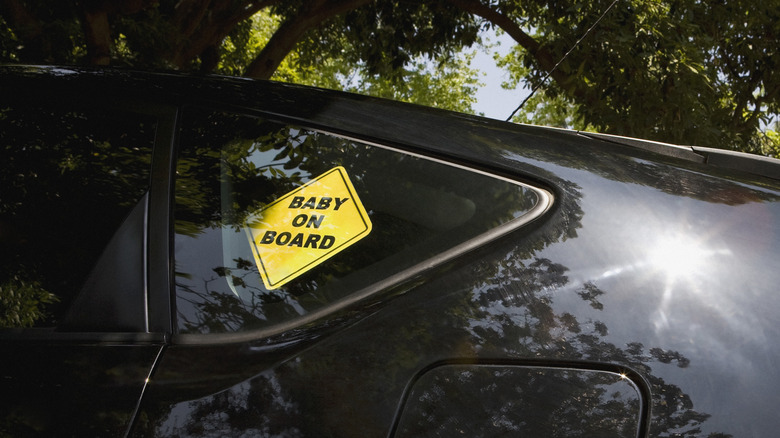The Weird History Of The Baby On Board Sign
You can paint the picture in your head pretty clearly, a Subaru Outback, Volvo station wagon, Dodge Caravan, or numerous other parent-mobiles with a yellow diamond decal affixed to the back window that reads "BABY ON BOARD" in clear and legible script. You are now aware that the car ahead of you in traffic driving slightly under the speed limit is piloted by a parent who is simultaneously trying to pay attention to the finer rules of the road and take care of the tiny human nestled in the back seat who is throwing handfuls of Cheerios and goldfish at the back of the driver's seat.
The placards are ubiquitous now and have been parodied the world over with varying degrees of cleverness. But where did it come from? As it seems like it has always existed since time immemorial and materializes on cars the second the owner has a child. In reality, the sign isn't that old, dating back to 1986, coincidentally just a few years after the first-ever production minivan, the Plymouth Voyager, was offered for sale. Michael Lerner (not the actor), the sign's primary marketer, bought the rights to the slogan from Patricia and Helen Bradley and did his best to market it.
Born out of concern for parent drivers
Although Lerner himself didn't have any children, the story of how it was created is all too familiar to anyone who has driven with children in the car. Lerner was driving his 18-month nephew home and found the experience mentally exhausting. The Baby On Board sign soon became part of Lerner's Safety 1st brand, a brand he started to market child safety devices like soft corners for tables, child locks for cabinets, and the like.
Soon, by the mid-1980s, Lerner's company had sold over three million signs. Retailers snatched up the sign like it was going out of style and nearly 40 years later, it's a staple in any traffic jam or long wait at a stop light. Whether or not the signs actually do anything or provide a real benefit has been the subject of debate. But, hopefully, the sign gives drivers enough time to pause and humanize the occupants of cars around them in traffic, regardless of their driving prowess or attentiveness to the road. Overall, that's not a bad thing.

